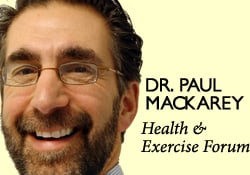
 On June 18, the Second Annual Lackawanna River Heritage Association’s Explorer Bike Tour and Festival will take place at Mellow Park in Peckville, PA. Good luck to all of the riders from our area.
On June 18, the Second Annual Lackawanna River Heritage Association’s Explorer Bike Tour and Festival will take place at Mellow Park in Peckville, PA. Good luck to all of the riders from our area.
Biking is a wonderful way to enjoy the beautiful outdoors of NEPA. It offers many health benefits and can serve as a method of cross-training for other sports such as running. Regardless of your riding style, biking can improve your leg strength by strengthening the muscles of the hips (gluteals), thighs (quad and hamstring) and legs (calfs). And, biking offers an excellent cardiovascular workout.
To begin riding, pick a bike that suits your environment and interests: you can choose from road bikes, mountain bikes, or hybrid bikes. A road bike is best for long distance riding on paved roads. With a light frame and thin tires, it offers less friction on the road and faster speed. Mountain bikes offer stronger frames with wide tires to grip uneven terrain, and they are best used for off-road trails. Hybrid bikes are a cross between the road bike and the mountain bike, and they offer flexibility with limited use on both streets and off-road trails. While all types of bike riding improve fitness, mountain biking is unique in its requirement for strength, agility and enthusiasm due to the need to traverse rough terrain with obstacles such as rocks, boulders, logs, and streams.
If you are already a road cyclist who has become bored with biking on paved roads and tired of following the rules of street riding with cars, mountain biking may be for you. Enthusiasts such as Seth Jones, MD, his brother Vance Jones, DDS, and Anders Nelson, MD have enjoyed the trails of NEPA for many years. They even make an annual pilgrimage to Moab, Arizona, (mountain biking capital of the USA), to challenge their skills. The fact that they have returned home without crutches speaks volumes for their fitness levels and biking skills.
If you are going to try mountain biking, remember that it requires an investment in the right equipment. You will need a good bike made specifically for tough terrain. A high-grade frame, shocks, and brakes are also necessary. Finally, a good helmet and protective pads for knees, elbows, and chest may prove valuable.
With any style of biking, good technique is important. Warm up and cool down by pedaling on flat terrain at slow to medium speed for 10 to 15 minutes. This can prevent injury and limit lactic acid accumulation. Practice using your brakes and gears on many types of terrain. Learn to shift while riding over logs or through streams, and maintain a consistent pedal cadence. Develop a feel for your brakes. Learn to pump the brakes (feathering) and avoid a panic brake squeeze of the front brake, especially when going downhill, or you may be sent flying over the handlebars. (I have done this while mountain biking with my sons at Lackawanna State Park and it is not pretty!)
Biking, like all aerobic exercise, provides all of the following benefits and does so without the added stress of joint compression and the wear and tear associated with running and other full-weight-bearing exercises:
Prevention is the best way to manage musculoskeletal problems associated with biking.
First, you can prevent many problems through proper fitting. Second, keeping your equipment in good working order will help prevent accidents. Inspect your bicycle regularly, paying close attention to parts such as tires, chain, brakes, and pedals. Third, maintain a fairly good fitness level in order to bike safely. If you are a beginner, start slowly. Warm up and slowly bike for 10 to 15 minutes and build up over time. Practice the coordination of stopping, starting, shifting and braking. Work to improve the strength and flexibility of your hamstrings, quadriceps, calfs and gluteal muscles, as all of these are necessary to generate pedal force. Also try working on your balance, as it is needed for safety and can be practiced on and off the bike. Be aware that adaptive equipment can modify your bike for added comfort and safety. Consider adding soft handlebar tape, shock absorbers for the seat post and front fork, cut-out and gel pad saddle seats, and wider tires. Finally, WEAR A HELMET!
When starting bicycling, do not progress too quickly. A transition from inactivity to over-activity in a short period of time can cause overuse injuries such as tendonitis. Along with starting off slowly, you can avoid overuse injuries by cross training. Bike only every other day: on the other days, walk, run, swim, or participate in other sports such as tennis, golf, and racquetball. Make sure you take time off to recover after a long ride. Use ice and massage to sore muscles and joints after riding.
Remember, cycling should be fun! Pain from improperly fitted and poorly maintained equipment is preventable. Excessive workouts and training rides should be kept to a minimum.
SOURCES: American Physical Therapy Association
Local Trail Information:
Rail-Trail Council of NEPA:
Lynn M. Conrad
PO Box 32
Union Dale, PA 18470
570-679-9300
Lackawanna Heritage Valley Authority
Natalie Gelb Sofanelli, Exec. Dir
538 Spruce St. Suite 516
Scranton, PA 18503
570-963-6730 Ext 8202
Read “Health & Exercise Forum” – Every Monday. This article is not intended as a substitute for medical treatment. If you have questions related to your medical condition, please contact your family physician. For further inquires related to this topic email: drpmackarey@msn.com.
Paul J. Mackarey PT, DHSc, OCS is a Doctor in Health Sciences specializing in orthopaedic and sports physical therapy. Dr. Mackarey is in private practice and is an affiliate faculty member at the University of Scranton, PT Dept.